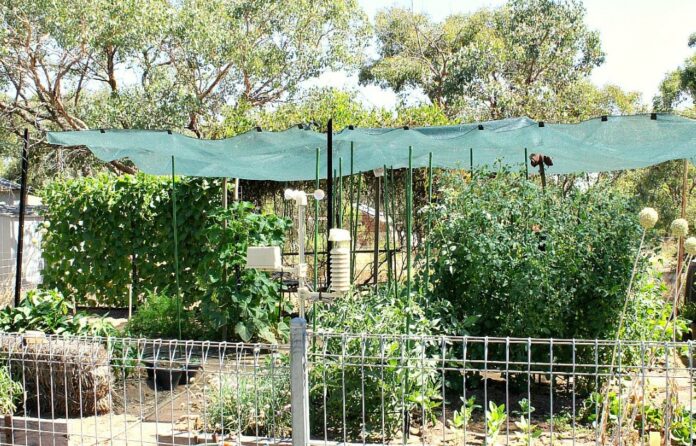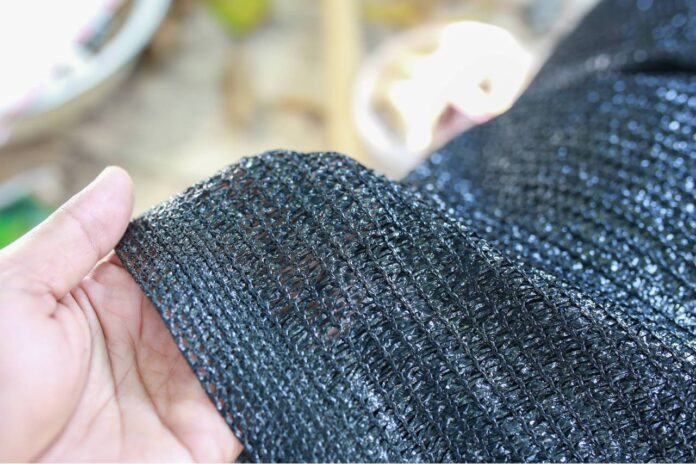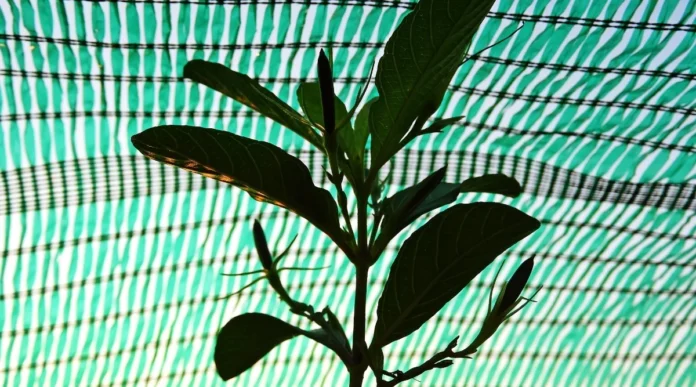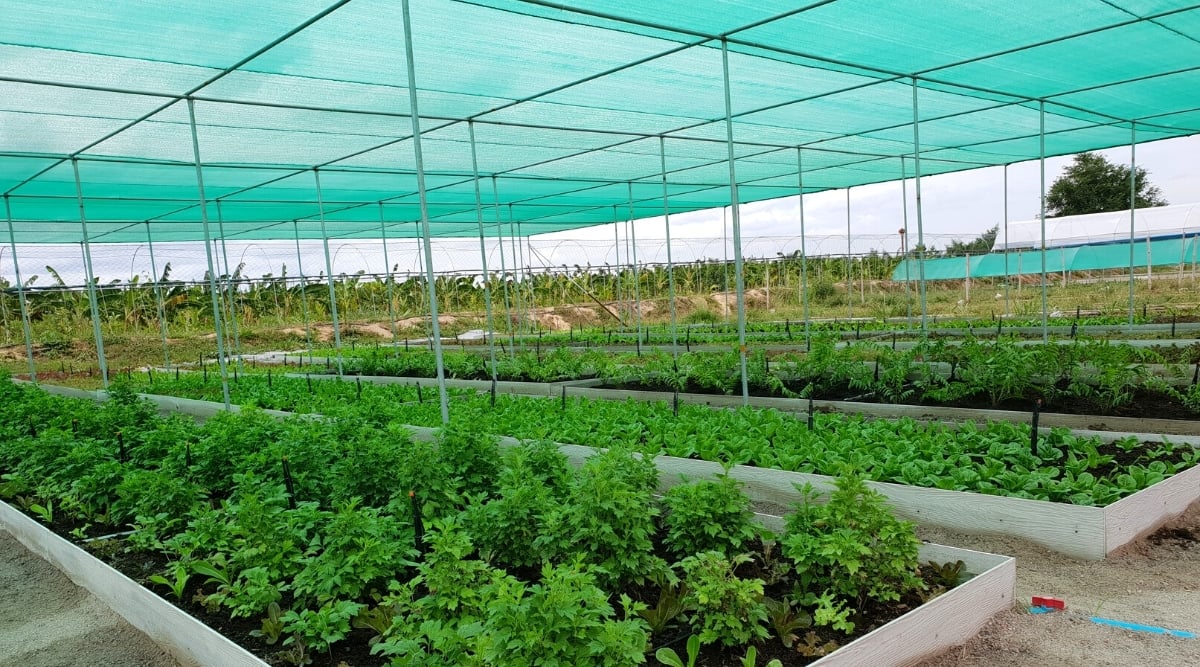Imagine your garden as a cozy, shaded nook, perfect for your veggies to chill and grow, away from the harsh glare of the sun. That’s where a shade cloth comes in – it’s like a cool umbrella for plants.
Made from different kinds of stuff, its main job is to keep your greens cool and happy, safe from the sun’s strong rays. This helps avoid problems like leaves getting burnt, plants drying out, or not growing properly.
In short, a shade cloth is like a protective friend for your garden, making sure the sunlight is just right.
Why the Color of Your Shade Cloth Matters a Lot

Picking the right color for your shade cloth is super important. The color changes how light and heat play in your garden. Different colors do different things – some soak up light, some bounce it back.
This affects how warm your garden gets and what kind of light your plants get, which can really change how well they grow. If you are hesitating to decide on the best colour shade cloth for vegetable garden, visit qibangnetting.
Black Shade Cloth
Black shade cloths are the go-to for many gardeners. They’re great at making sure the light is even and not too harsh. In cooler places or times of the year, the black cloth helps by holding in a bit more warmth. But, if it gets really hot, this might make things too warm under the cloth, which isn’t always what you want.
The Cool Reflectors ─ White and Aluminet Shade Cloths
For those super sunny and hot spots, white or shiny aluminet cloths are the heroes. They send a lot of the sunlight bouncing away, keeping things cooler underneath. This is awesome for plants that don’t like too much heat. Plus, these shiny cloths spread the light around, making sure even the hidden parts of your plants get some sunshine.
The Colorful Boosters ─ Red and Blue Shade Cloths
Lately, people are getting excited about red and blue shade clothes. These colors help with certain light waves that plants love for growing strong and healthy.
Red can help some veggies flower and fruit better, while blue might make them grow big and strong. But, using these colors is a bit more of a science project, needing you to know what your garden needs.
How Much Shade is Just Right?

It’s not just about color; how thick or thin your shade cloth is also makes a big difference. They come in all sorts of shades, from light to heavy. What you choose depends on what you’re growing and where you live. Leafy greens might like more shade while fruiting plants like tomatoes might want more sun.
Setting It Up the Right Way
Putting up your shade cloth the right way is key. You want enough air moving around so it doesn’t get too hot or stuffy, which could make your plants sick. Keeping the cloth a bit above the plants is a good idea.
Also, think about where the sun moves during the day so your plants get the right amount of sunshine at the right times.
Change It Up as Needed
Using a shade cloth isn’t a one-time deal. You’ve got to keep an eye on things and change how you use them based on the weather, the season, and how your plants are doing.
On cooler or cloudy days, you might open it up to give your plants more light. When it’s super hot, making sure they have enough shade is important.
Watch How Your Plants Are Doing

Keep an eye on your plants to see how they’re handling the shade. If they start looking long and thin, or not flowering much, they might need more light. If they look stressed or burnt, they might need more shade or a different kind of shade cloth.
Picking the Right Material and Keeping It Green
The stuff your shade cloth is made from matters a lot, too. You want something that can handle the weather and last a long time. Materials like polyethylene or knitted polyester are tough and can take a lot of wear and tear.
Choosing something that won’t get ruined by the sun too quickly is smart. And if you’re into keeping things green, look for cloths made from recycled materials or that can be recycled. This way, your garden stays eco-friendly.
Mixing and Matching
Sometimes, one size doesn’t fit all, especially in your garden. Think of your garden like a patchwork quilt – different parts might need different types of shade. Mixing up your shade cloths can be like giving each plant its very own cozy spot.
You might use a denser, darker shade for your tender lettuce and a lighter, reflective one for your sturdy tomatoes. It’s like setting up little micro-environments within your garden, each tailored to make your plants as comfy as possible.
So, don’t be afraid to get creative and mix things up. Your garden is your canvas, and you’re the artist, painting with shades to make sure every plant gets exactly what it needs.
The Right Time for Shade
Just like us, plants have their daily routines and seasonal cycles. Paying attention to these natural rhythms can help you use your shade cloth in harmony with nature.
For instance, young seedlings might appreciate a gentler touch with more shade, while mature plants might be ready to soak up a bit more sun. And as the seasons change, so do your plants’ needs.
Keeping in tune with these natural cycles and adjusting your shade cloth accordingly can make all the difference. It’s like being a DJ for your garden, setting the perfect vibe for your plants to thrive in.
By tuning into nature’s rhythms, you’re helping your garden dance to the beat of the seasons, growing lush and productive.
Wrapping It Up
Finding the perfect shade cloth for your veggie garden is about more than just picking a color. It’s about understanding what your plants need, what the weather’s like, and how you can make your garden a happy place for your veggies.
Whether you go for the trusty black cloth or try something more colorful, remember it’s all about making sure your plants grow strong and healthy. And by choosing wisely, you’re not just helping your garden, but you’re also doing your bit for the planet.







